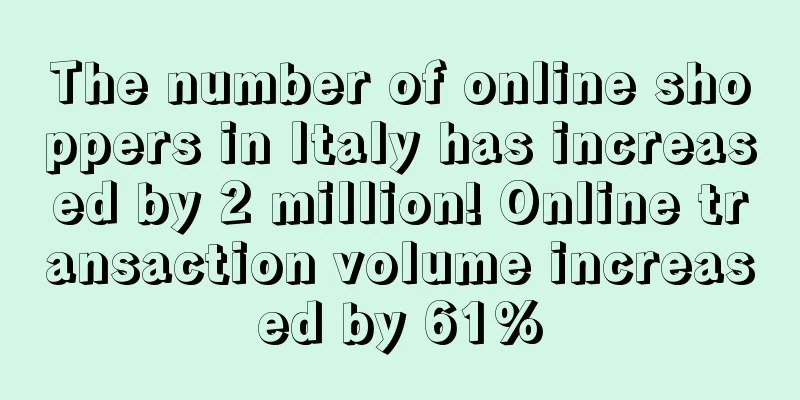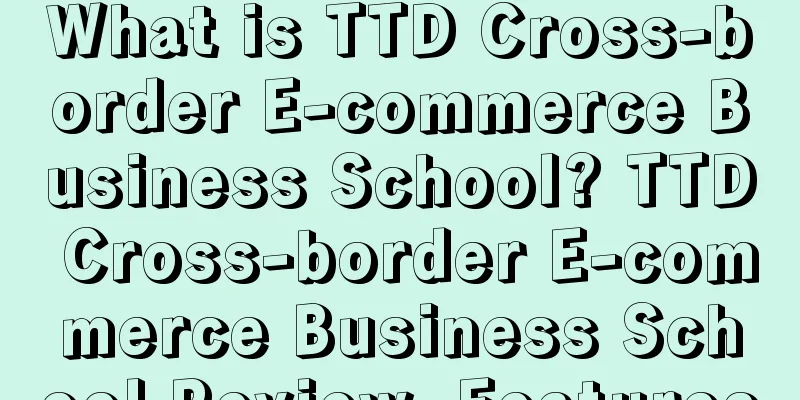The number of online shoppers in Italy has increased by 2 million! Online transaction volume increased by 61%

|
As the fastest growing online market in Europe, the Italian e-commerce market shows great potential. European E-commerce News reported that the size of the Italian e-commerce market has grown by 19% in the past five years. Since 2020, the number of online shoppers in Italy has surged by 2 million.
In 2019, the Italian e-commerce market was worth 31.5 billion euros. Since the outbreak of the epidemic, the size of the Italian e-commerce market has increased by 15%. In 2020, the proportion of small and medium-sized enterprises selling on e-commerce platforms increased by 50%, reaching one-third of the total number of enterprises.
Compared with other major European countries, the proportion of small and medium-sized online sellers in Italy has shown a steady growth trend. Although Italy does not have an advantage in the number of online platform sellers, it has great potential.
Online market researchers say that for Italian online consumers, the time spent online is quite attractive. The convenience of using online platforms, a wide range of offers, reliable services, and low or free home delivery services are all reasons why Italian consumers shop online.
Italian consumers mainly use a relatively concentrated number of online payment service providers, with nearly one-third of consumers using e-wallets for e-commerce transactions. Nexi.it, an Italian local online payment operator, and Stripe and Paypal from the United States are currently the main online payment providers active in Italy. Since 2020, the number of online sellers has doubled, and the number of online transactions of payment service provider Satispay has also increased by 61%.
According to people familiar with the matter, the Italian market is improving online payment solutions. With the development of e-commerce trading platforms, local online payment will also develop new models to adapt to the development of the Italian online trading market.
The head of the website Businessexpansion.it said that most Italian sellers will build their own warehouses for their online businesses. Italian e-commerce platforms are experienced in electronic distribution and can provide one-stop service support for online sellers through warehousing, transportation process, return processing and customer service.
In addition to Amazon Italy, eBay Italy and AliExpress, the most popular e-commerce platforms in Italy include local brands such as e-commerce department store ePRICE, grocery brand Esselunga and book digital media market IBS.it, which all have a stable user base with monthly visits of up to 6 million.
According to survey data, Italian online shoppers are concentrated between the ages of 18 and 44, with a relatively even ratio of men to women; Italian consumers pay much attention to product quality. Therefore, cross-border sellers can accurately locate, understand consumer needs, and tap into the potential of the Italian market. Cross-border e-commerce market Italy |
<<: Klarna survey finds baby boomers place more importance on sustainable beauty than Gen Z
>>: Indonesia's online food shopping and delivery surges during Ramadan 2021
Recommend
Annual revenue of $50 million! Male beauty brand Duke Cannon completes strategic financing
Duke Cannon, a beauty brand mainly targeting male...
French e-commerce sales reached 112.2 billion euros in 2020
Like the rest of Europe, French e-commerce was ma...
The product is risky! Amazon received a warning letter from the FDA
Amazon has a huge number of products with a wide ...
Amazon will automatically verify claims and provide refunds on behalf of sellers
Recently, Amazon UK announced that from December ...
What is ShopeX? ShopeX Review, Features
ShopeX , the intelligent operation platform of Sh...
Nearly 39 million views! The goods sold by a Shenzhen seller burned down a foreign man's house
Product quality has always been the foundation of...
What is Sundrug? Sundrug Review, Features
Sundrug is a large drugstore chain with nearly 1,0...
What is CM? CM Review, Features
CM is a leading global provider of conversational...
What is MoneyBoxs? MoneyBoxs Review, Features
Chongqing Chunyi E-Commerce Co., Ltd. (MoneyBoxs) ...
The number of flights has doubled in half a year, and Amazon Air has expanded its European business
According to foreign media reports, Amazon Air ha...
As the choice of one quarter of consumers, will the resale market become a hot spot for e-commerce?
Recently, according to foreign media reports, the...
What is Tabby? Tabby Review, Features
<span data-docs-delta="[[20,{"gallery"...
Online retail drives UK warehouse construction boom, with 40 million square feet of space to be developed
Warehouses are booming in the UK this year, with ...
Total transaction volume jumped 1.8 times, Japan's 2021 "Super PayPay Festival" hit a record high
Yahoo Japan announced that on the last day of the...
New cross-border opportunities! AliExpress's strong growth in the Korean market has attracted praise from Korean media
Recently, the authoritative Korean media "Se...









